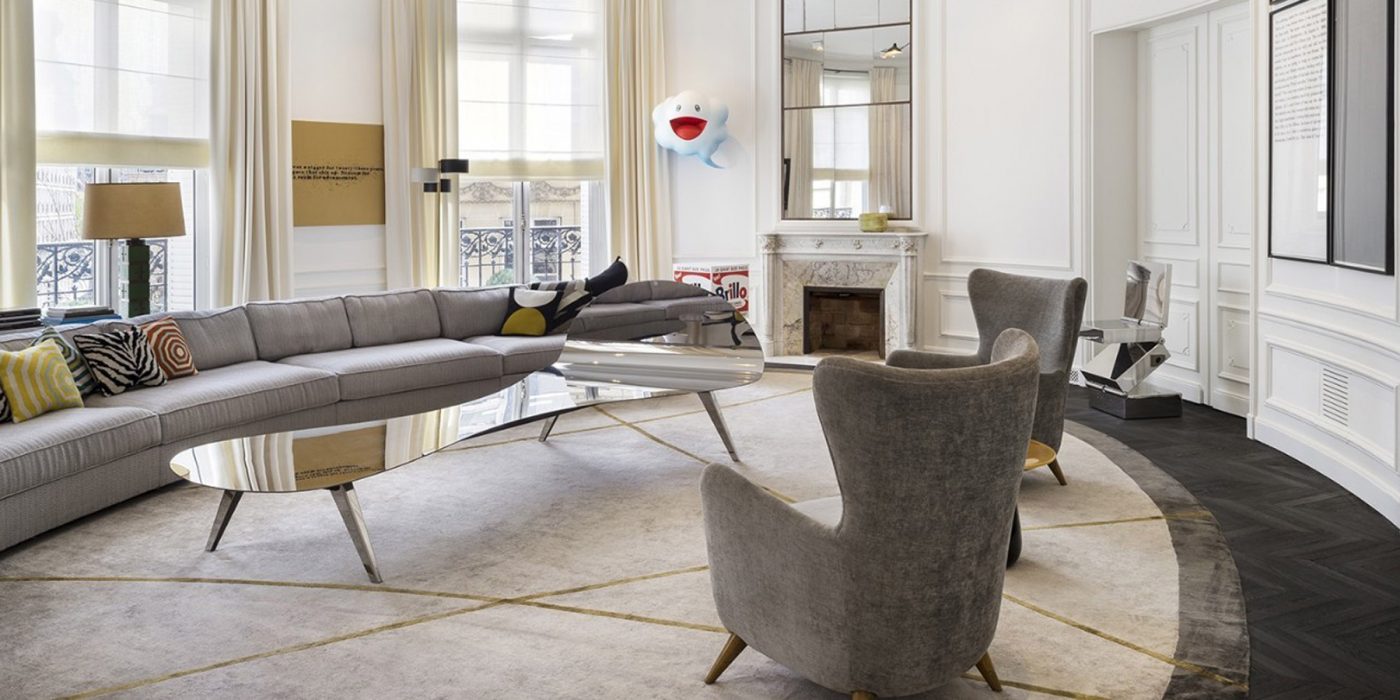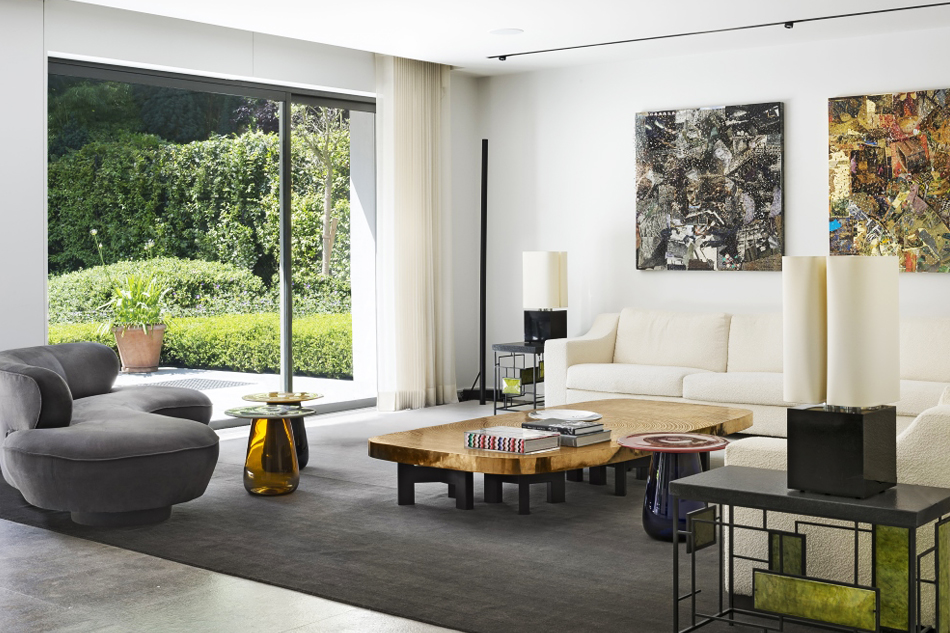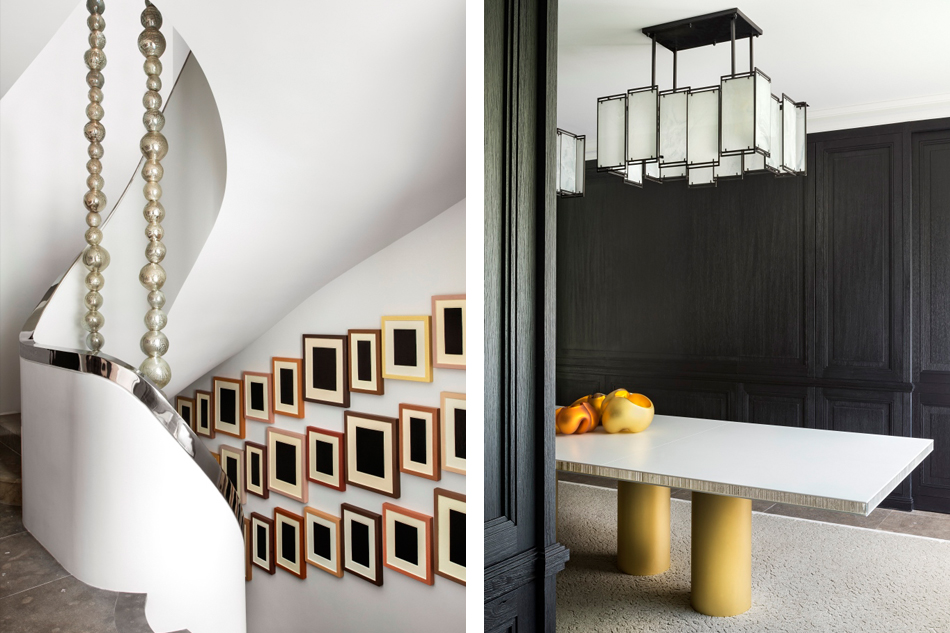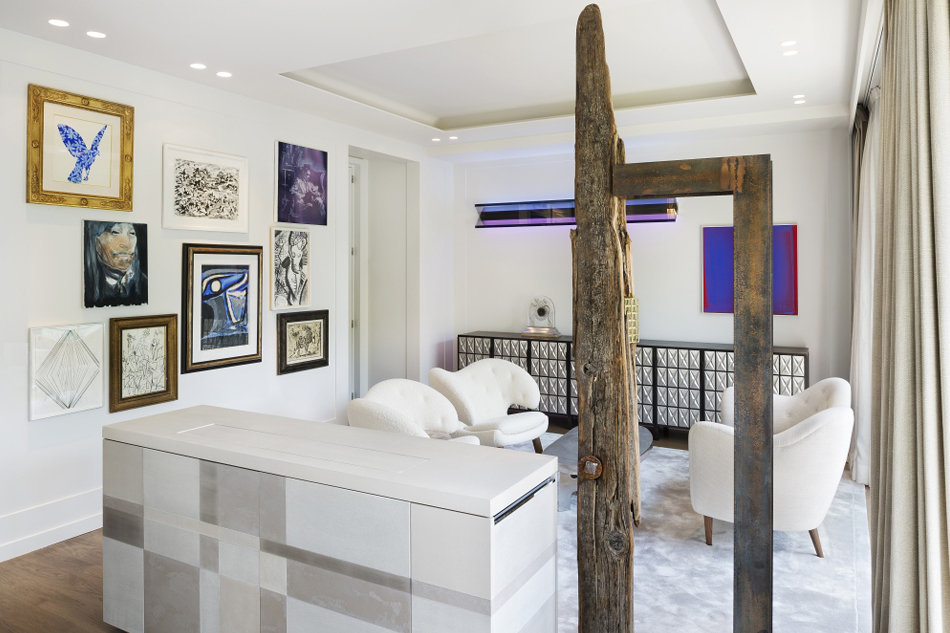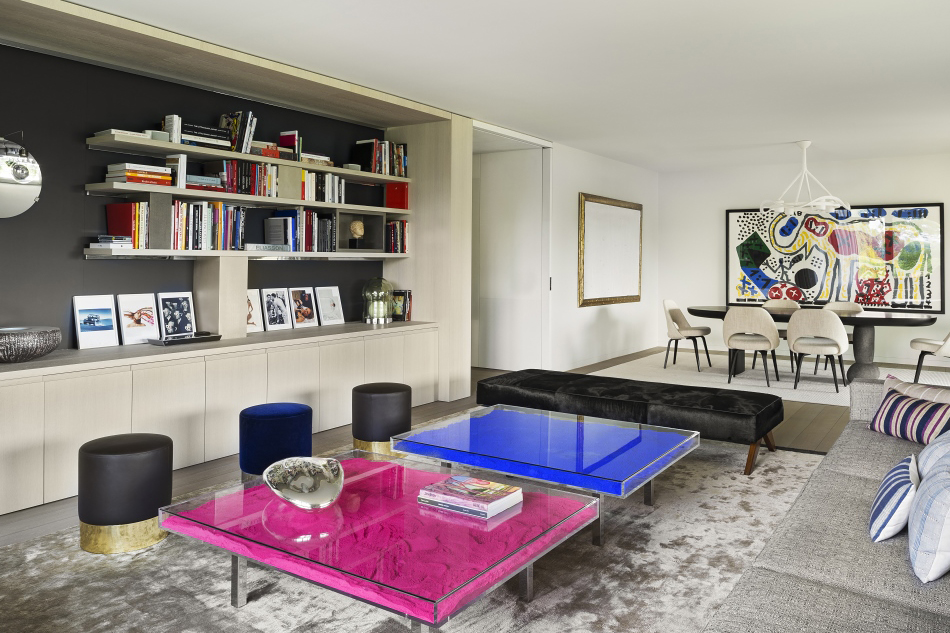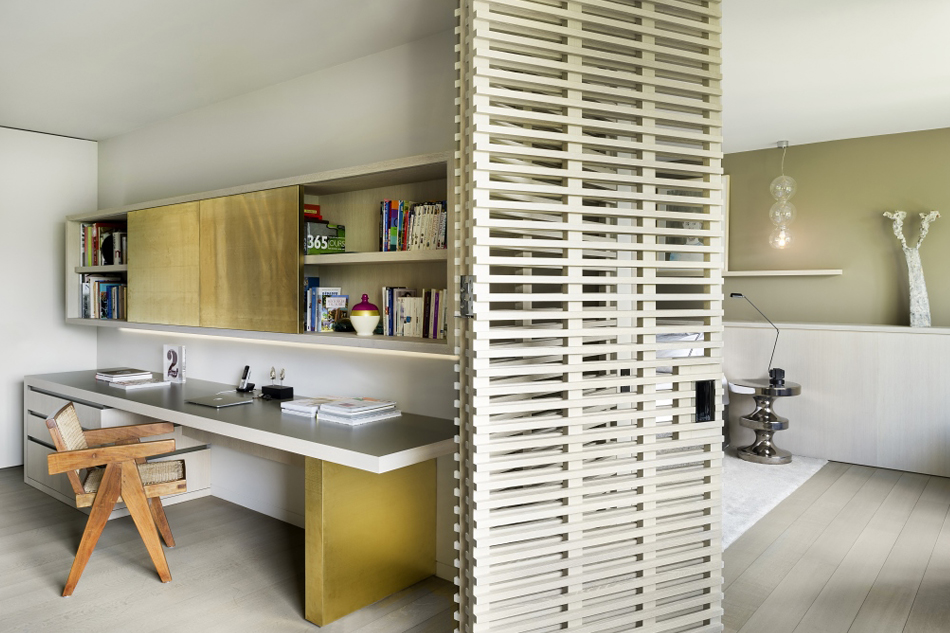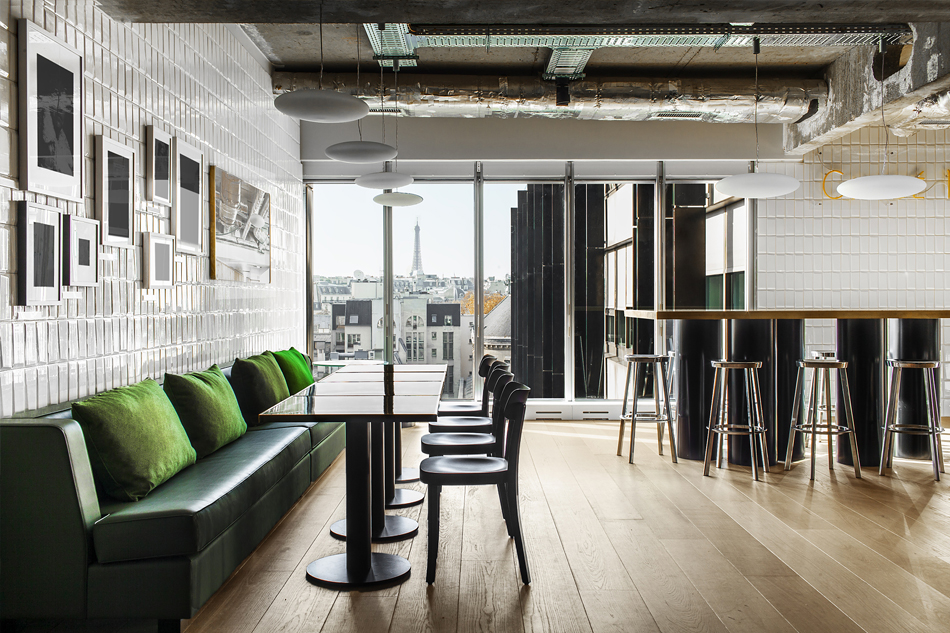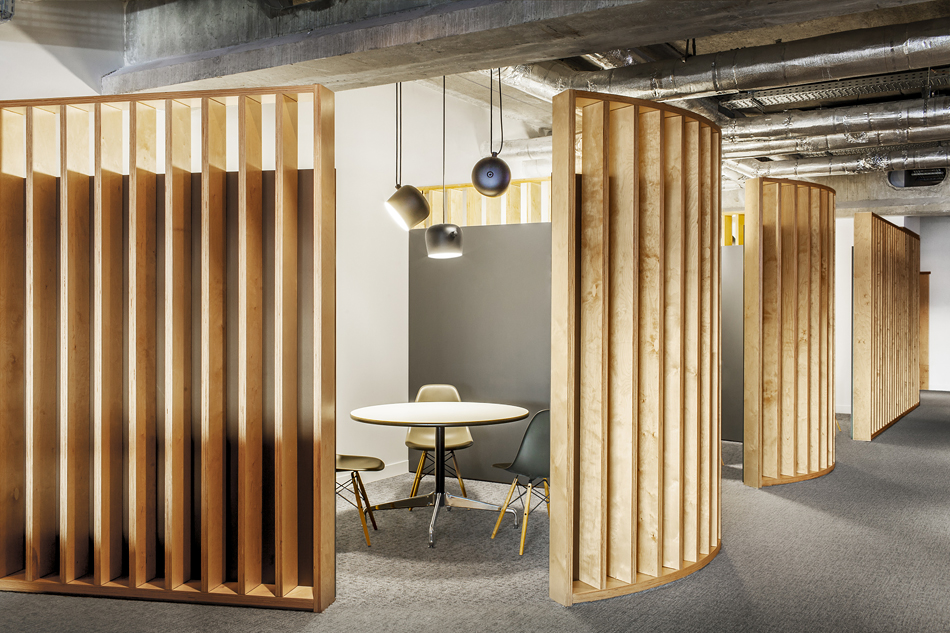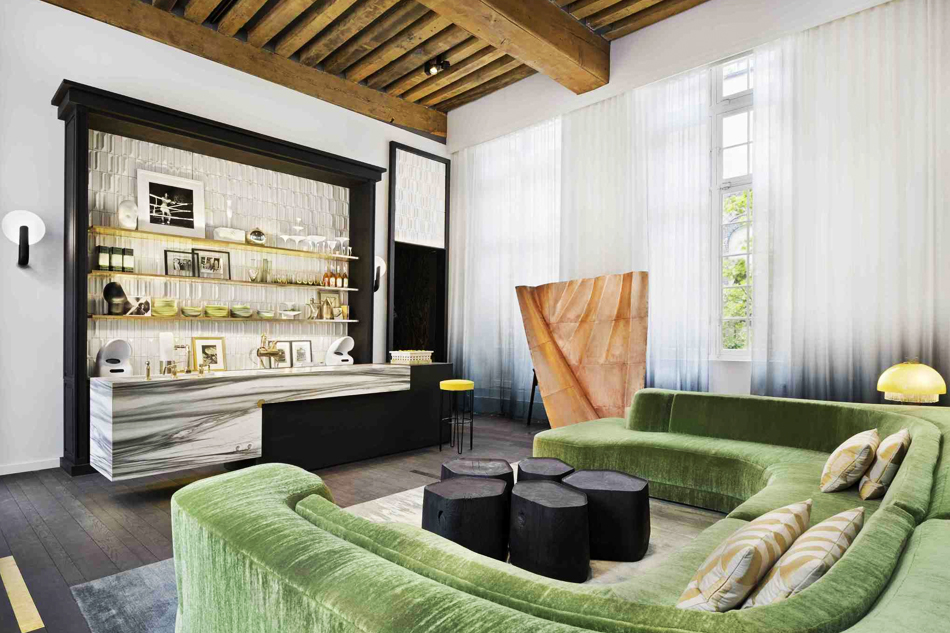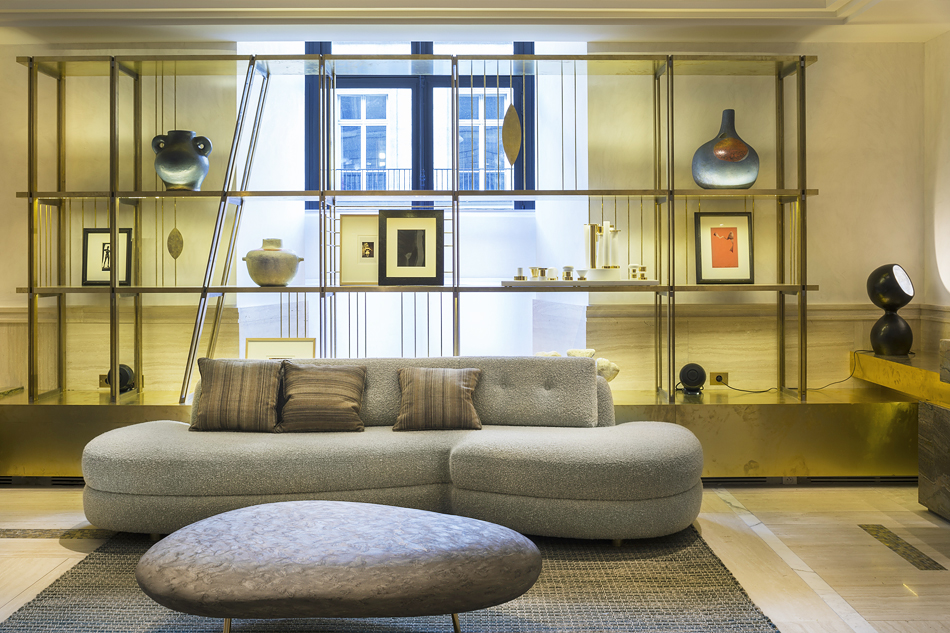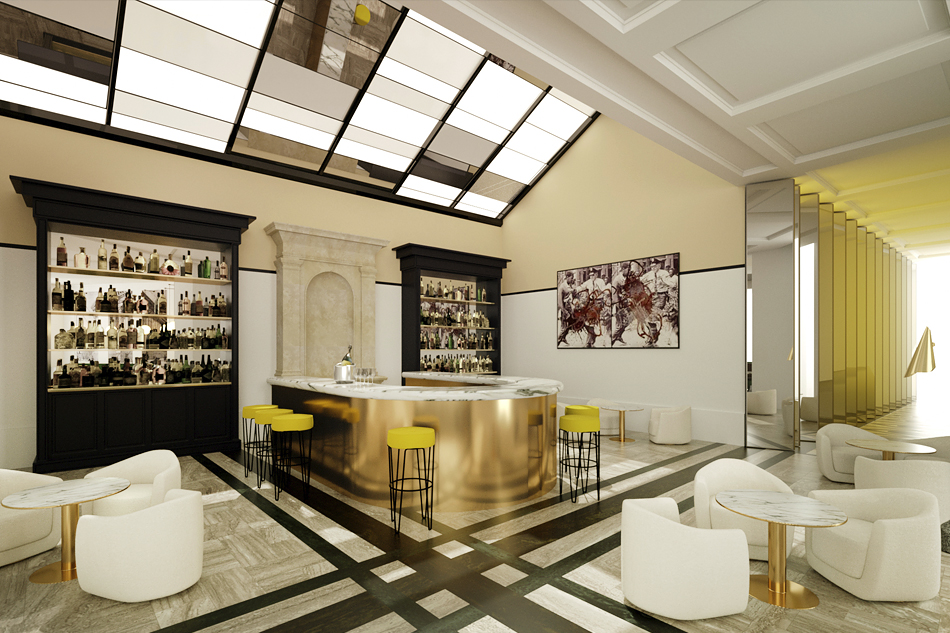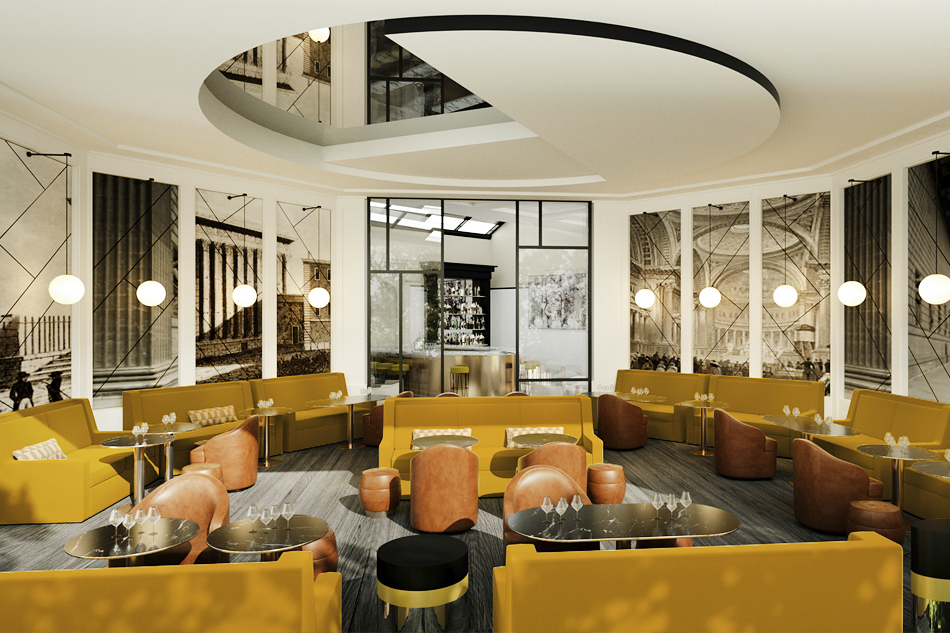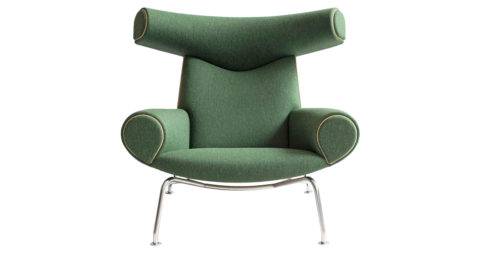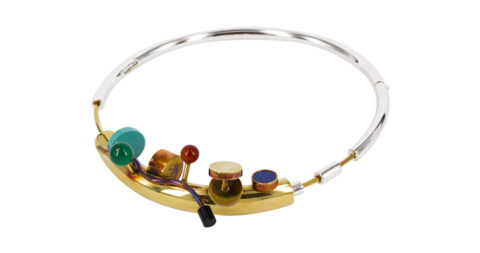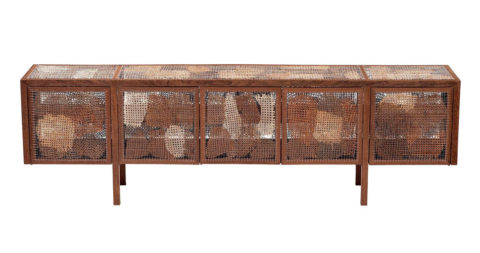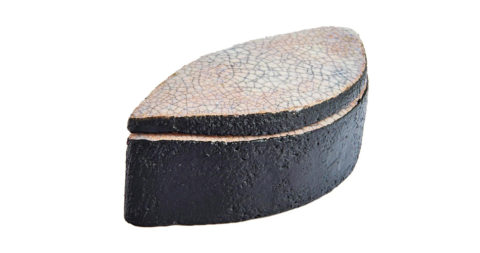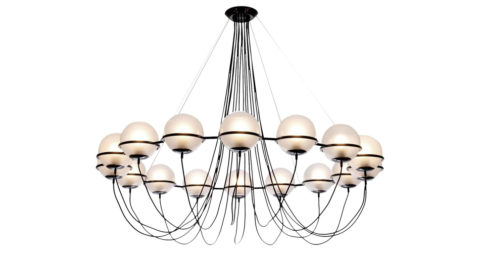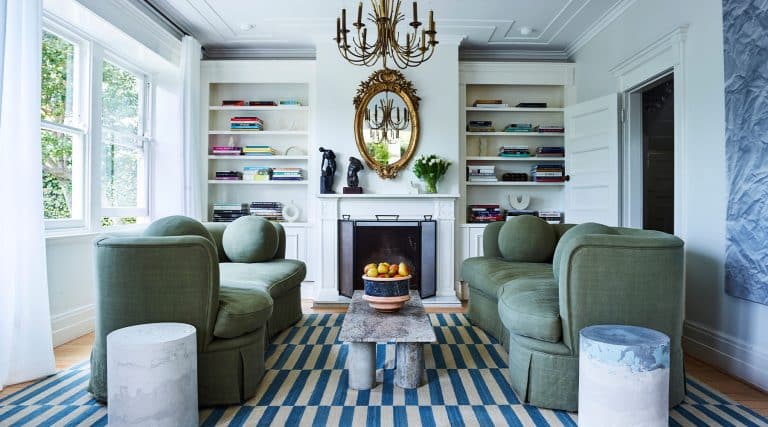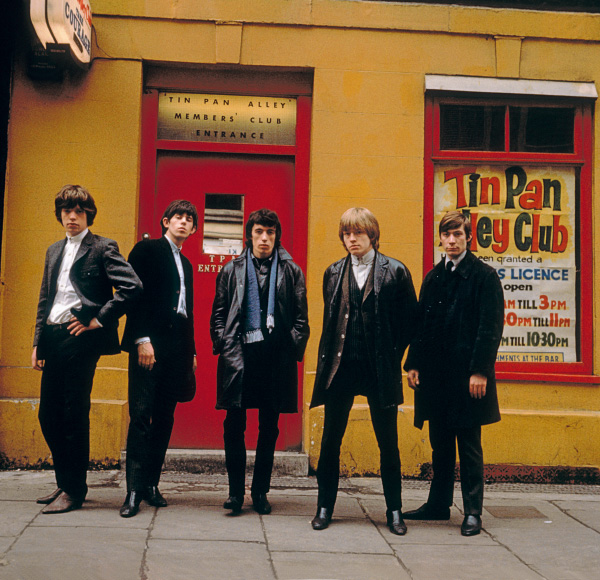
Designer Charles Zana creates serene spaces, letting the artwork provide the “wow” factor (portrait by Yannick Labrousse). Top: The neutral palette in this Paris apartment puts the focus on the homeowner’s art collection, which includes pieces by Takashi Murakami and Andy Warhol. Photos by Jacques Pépion, unless otherwise noted
Paris-based designer Charles Zana likes to think he doesn’t have a set aesthetic. “I’m not into hard-and-fast recipes,” he states. “What’s nice is to create an atmosphere specific to each space.” “He doesn’t force a style upon his clients,” concurs the editor in chief of AD France, Marie Kalt. “He’s much more versatile than many of his peers.”
Which is not to say that the interiors he creates don’t share recognizable traits. There’s always a sense of balance, a certain orderliness and a tremendous precision. “He has a great way with volumes,” says Kalt. Zana himself notes a distinctive palette (“harmonies of grays and greens”) and the use of more traditional architectural detailing, often in the form of paneling and cornices inspired by 18th-century models. His furnishings, meanwhile, are unmistakably modern. He’ll often commission pieces from such contemporary designers as Eric Schmitt and Johanna Grawunder and mix them with 2oth-century classics by the likes of Charlotte Perriand and Roger Tallon. And he has an overriding passion for post-war Italian design. “There was great quality to both the design and manufacturing,” he explains. “Plus, there’s something lighthearted, which I like — a bit of la dolce vita spirit.”
Another of Zana’s particularities is that a large majority of his residential projects are for art collectors. One — a house in the Parisian suburb of Neuilly-sur-Seine that was published earlier this year in Architectural Digest — features works mainly by contemporary painters. He also decorated a home in Paris’s 16th arrondissement for a woman whose focus is French art from the 1970s. “His strengths are the elegance and sobriety of his work,” enthuses one client, Monaco-based Madame Pastor. “He creates spaces where the artworks can breathe and bring a certain originality to an interior.”
“Charles excels at the dialogue between the disciplines,” adds his friend Marc Benda, of the New York gallery Friedman Benda, from whom Zana sources objects by such design talents as Ettore Sottsass and Byung Hoon Choi. “There is never a clash between the art, the architecture and the design.” For Zana himself, the skill is in finding the perfect balance. “We aim for serenity in the decoration rather than creating strong visual effects,” he explains. “The ‘wow’ factor should come from the art.”

Cane-back chairs surround a marble dining table in this Paris apartment, which has a black, white and gray palette.
Zana’s affinity for such projects is no doubt largely due to the fact that he is also a keen collector. He started acquiring art books from dealers in Saint-Germain-des-Prés at an early age and bought his first design object — a piece of 1950s blue Venini glassware — at the age of 25. Today, in his Paris apartment in an 18th-century building in Faubourg Saint-Germain, you can find several pieces by the 1970s Italian design collective Alchimia, a table by Peder Moos, lighting by Angelo Lelli, ceramics by Sottsass, and furniture and vases by Andrea Branzi. Zana has a particular passion for vases, of which he estimates he owns some 300, displayed both in his apartment and partly locked away in storage. “For me, they are fundamental and essential objects that have existed since antiquity,” he explains. “There’s a sacred aspect to vases.”
Zana was born in 1960 in Sousse, Tunisia. His family moved to France when he was two, and he grew up in the Parisian suburb of Vincennes. His father ran a publishing business, his mother a maternity clinic. “They were people who really embraced modernity,” he recalls. “They fully lived the utopia of the 1970s.” At home, there were splashes of orange and furniture made from plastic. Young Zana had a Mathieu Matégot console in his bedroom, and elsewhere in the house were pieces by Tallon, Gae Aulenti and Poul Kjærholm.
Zana studied architecture at the École des Beaux-Arts, in Paris, graduating in 1985, and then moved to New York, where he spent nearly two years working for a design firm whose projects included luxury apartments and boutiques for Louis Vuitton. On his return to Paris, he joined another practice with a high-end clientele before heading out on his own in 1990.
“His strengths are the elegance and sobriety of his work,” enthuses client Madame Pastor. “He creates spaces where the artworks can breathe and bring a certain originality to an interior.”
He recalls business in the early years as slow. His first significant project was a large apartment on Place des Vosges in the mid-’90s, and he was commissioned to create several boutiques for the fashion brand Et Vous, in Japan. But his big break came in 1998, when he was approached by a prominent Swiss businessman to work on a 22,000-square-foot house, on Lake Geneva, whose gardens were being created by legendary Belgian landscape designer Jacques Wirtz. Zana filled the interiors of the traditional, plaster-clad home with a carefully curated and sober selection of Shaker furniture, as well as pieces by such other American proponents of the pared-down as Frank Lloyd Wright and Gustav Stickley. Through word of mouth, this project led to him developing a discreet, top-drawer clientele. “As I often say, I work for a handful of people but do many projects for each of them,” he asserts.

During the day, the Café Artcurial is lit by sun flooding through the glass roof, while at night it’s illuminated by Luigi Caccia Dominioni–designed fixtures.
In recent times, Zana’s reputation has grown thanks to a number of nonresidential projects, including the Café Artcurial, in the noted Paris auction house. Conceived as an homage to Giò Ponti, it incorporates walls decorated with the Italian maestro’s trademark geometric patterns and chairs reminiscent of his iconic Superleggera model. The interiors he designed for the Hôtel Le Marianne, near the Champs-Elysées, are elegant and restrained, the accommodations featuring brushed-oak desks, Michael Anastassiades table lamps and a tranquil palette. “I created the room I dream of having when I’m traveling,” he says. “Very serene with few things on the walls.”
Zana is also responsible for the open-plan offices of Condé Nast France, home to eight magazines. At their heart is a lively café, which he based on the American coffee shop. “We thought it would be better to create one communal space rather than eight different meeting rooms,” he says. Declares Kalt, who consulted on the project: “Charles’s design perfectly corresponds to what we wanted. It’s not grandiose, but at the same time, it’s chic and luxurious.”
Success breeds success, and Zana is currently on a roll. He has just finished an apartment in Monaco and a penthouse in London’s Chelsea neighborhood and is currently at work on homes in Madagascar and Israel, as well as a restaurant on the ski slopes in Gstaad and luxury conglomerate LVMH’s Cheval Blanc hotel, on Saint Barths, which he is revamping. He also recently unveiled a beautiful new collection of rugs with rhythmic, geometric patterns for La Manufacture Cogolin.
Zana could not seem happier with his lot. “I don’t know of any other profession that’s quite so diverse and complete,” he says. “I often liken an interior designer to a conductor. He makes all the different participants on a project play together and helps them to create in unison.”
Charles Zana’s Quick Picks on 1stdibs
